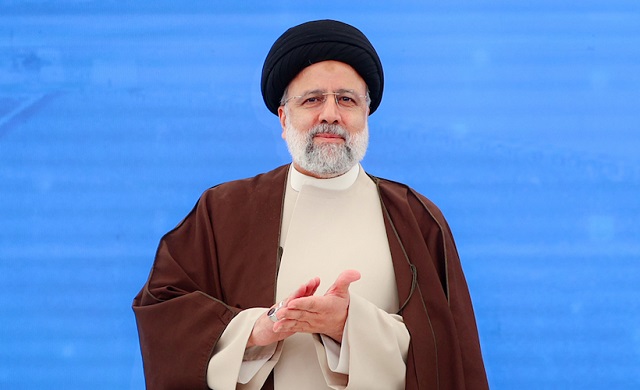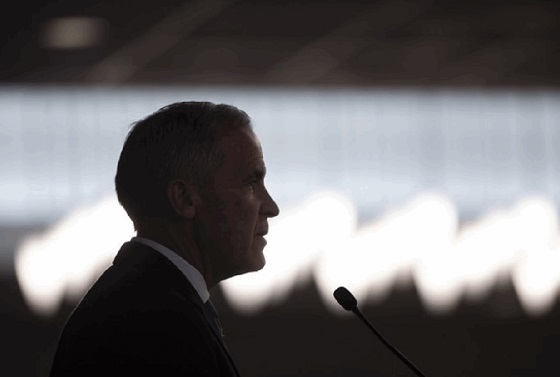International
Iran’s President Ebrahim Raisi, who oversaw mass executions, dies in helicopter crash

Iranian President Ebrahim Raisi
From LifeSiteNews
By Matt Lamb
Ebrahim Raisi, a Muslim cleric expected to eventually replace Iran’s Ayatollah Ali Khamenei, oversaw the execution of thousands of dissidents and supported Hamas in its terrorist attacks.
The president of Iran died in a helicopter crash Sunday evening.
Ebrahim Raisi was a Muslim cleric who claimed his family descended from Muhammed, the founder of Islam. He died near Azerbaijan along with other officials who were visiting the country for an event celebrating a new dam, according to Reuters.
Raisi was a Shiite leader who served on the 1988 commission that sentenced thousands of political prisoners to death. He was expected to eventually replace the Ayatollah Ali Khamenei.
“Human rights organizations estimate that between 4,500 and 5,000 men, women and children were killed in the summer of 1988 in prisons across Iran,” according to Amnesty International’s summary. “The pattern of political executions changed dramatically from piecemeal reports of executions to a massive wave of killings that took place over several months.”
“The true number of dead, however, is still unknown as the executions were carried out in secret. In fact, many relatives were never told about the killings or where their loved ones had been buried,” Amnesty International reported.
In September 2022, his government killed hundreds of protesters against clerical rule, according to the BBC.
“The ‘Woman, Life, Freedom’ movement was sparked the death in custody of Mahsa Amini, a young woman who had been detained by morality police in Tehran for allegedly wearing her hijab ‘improperly,” the BBC reported. “Authorities denied she was mistreated, but a UN fact-finding mission found she was ‘subjected to physical violence that led to her death.’”
Raisi oversaw Iran’s further enrichment of uranium and attacks on Israel, according to the Associated Press. He was “a hard-line protégé of the country’s supreme leader who helped oversee the mass executions of thousands in 1988 and later led the country as it enriched uranium near weapons-grade levels and launched a major drone-and-missile attack on Israel,” according to the AP’s article on his death.
“An Israeli official told Reuters it was not involved in the crash,” the news outlet reported. “It wasn’t us.”
Iran also allied itself with Russia and supplied it with weapons to fight Ukraine; Putin called Raisi “a true friend of Russia,” in his condolence message, according to Reuters.
The terrorist group Hamas also mourned Raisi’s death and that of Foreign Minister Hossein Amirabdollahian, who also died in the plane crash. Hamas thanked them for supporting them in the terrorist attacks against Israel on October 7, 2023, and the ensuing war.
Censorship Industrial Complex
Move over Soviet Russia: UK Police Make 10,000 Arrests Over “Offensive” Online Speech

In a nation where 90 percent of crimes go unsolved, the real emergency seems to be someone being offensive online.
|
|
Energy
Expanding Canadian energy production could help lower global emissions

From the Fraser Institute
By Annika Segelhorst and Elmira Aliakbari
Canada’s most timely opportunity to lower overall global emissions is through expanded exports to regions that rely on higher-emitting fuel sources.
The COP30 climate conference in Brazil is winding down, after more than a week of discussions about environmental policy and climate change. Domestic oil and natural gas production is frequently seen as a fundamental obstacle to Canada’s climate goals. Yet the data shows that Canadian energy production is already among the world’s cleanest, generating lower greenhouse gas (GHG) emissions per barrel-of-oil-equivalent produced, among major producing countries. Expanding the role of Canadian oil and gas in global markets can replace higher GHG-emitting alternatives around the world, driving down global GHG emissions.
Prime Minister Carney’s first budget highlights Canada’s “emissions advantage” in a chart on page 105 that compares the amount of GHG emissions released from producing oil and natural gas across 20 major producing countries. Compared to many other top-producing countries, Canada releases fewer GHG emissions per barrel of oil and gas produced when considering all phases of production (extraction, processing, transport, venting and flaring).
For oil production, Canada has an advantage over most major producers such as Venezuela, Libya, Iran, Algeria, Nigeria, China, Russia and Qatar. Canada’s emissions per barrel of oil produced are below the global average, making Canada among the lower emitting producers worldwide.
Similarly, Canada’s natural gas production has an emissions per barrel equivalent that is lower than the global average and is below major producers such as Turkmenistan, Uzbekistan, Nigeria, Indonesia, China, Argentina, Malaysia, Australia, Algeria, Iran, Russia, India and the United States. The chart below reveals countrywide average GHG emissions per barrel of oil or natural gas produced in 2022.
Source: International Energy Agency (2023), The Oil and Gas Industry in Net Zero Transitions 2023, IEA, Paris, p. 69
Canada’s emissions advantage stems from years of technological innovations that require less energy to produce each barrel of oil along with improvements in detecting leaks. From 1990 to 2023, Canada’s total production of crude oil rose by 199 per cent, while emissions per barrel of oil produced declined by 8 per cent, according to Environment and Climate Change Canada (ECCC). In the oilsands, since 1990 emissions per barrel have fallen by nearly 40 per cent while emissions from natural gas production and processing have decreased by 23 per cent.
Canada has already implemented many of the most practical and straightforward methods for reducing carbon emissions during oil and gas production, like mitigation of methane emissions. These low-hanging fruits, the easiest and most cost-effective ways to reduce emissions, have already been implemented. The remaining strategies to reduce GHG emissions for Canadian oil and gas production will be increasingly expensive and will take longer to implement. One such approach is carbon capture, utilization, and storage (CCUS), a technology which traps and stores carbon dioxide to prevent it from reaching the atmosphere. Major infrastructure projects like this offer potential but will be difficult, costly and resource intensive to implement.
Rather than focusing on increasingly expensive emission reductions at home, Canada’s most timely opportunity to lower overall global emissions is through expanded exports to regions that rely on higher-emitting fuel sources. Under a scenario of expanded Canadian production, countries that presently rely on oil and gas from higher-emitting producers can instead source energy from Canada, resulting in a net reduction in global emissions. Conversely, if Canada were to stagnate or even retreat from the world market for oil and gas, higher-emitting producers would increase exports to accommodate the gap, leading to higher overall emissions.
As Canada’s climate and energy policy continues to evolve, our attention should focus on global impact rather than solely on domestic emissions reductions. The highest environmental impact will come from enabling global consumption to shift towards lower-emitting Canadian sources.
-

 Alberta2 days ago
Alberta2 days ago‘Weird and wonderful’ wells are boosting oil production in Alberta and Saskatchewan
-

 Alberta2 days ago
Alberta2 days agoAlberta to protect three pro-family laws by invoking notwithstanding clause
-

 Business2 days ago
Business2 days agoCanada is failing dismally at our climate goals. We’re also ruining our economy.
-

 Health1 day ago
Health1 day agoCDC’s Autism Reversal: Inside the Collapse of a 25‑Year Public Health Narrative
-

 Energy2 days ago
Energy2 days agoThe Carney Government is Hijacking the Phase “Energy Superpower” to Advance Their Agenda
-

 Crime1 day ago
Crime1 day agoCocaine, Manhunts, and Murder: Canadian Cartel Kingpin Prosecuted In US
-

 Health1 day ago
Health1 day agoBREAKING: CDC quietly rewrites its vaccine–autism guidance
-

 National1 day ago
National1 day agoPsyop-Style Campaign That Delivered Mark Carney’s Win May Extend Into Floor-Crossing Gambits and Shape China–Canada–US–Mexico Relations










